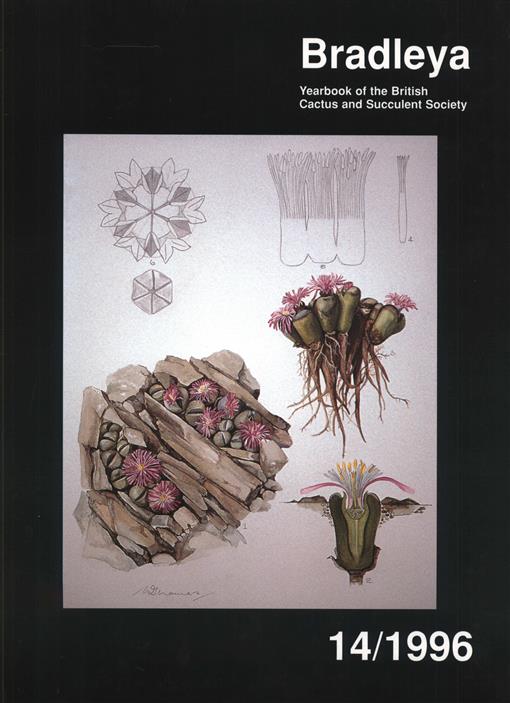The purpose of this study was to assess the phylogenetic relationships between tribes Cereeae and Browningieae in the cactus subfamily Cactoideae. During field trips to Venezuela, Ecuador and Chile, tissue samples were collected from representative specimens in natural populations. Monvillea* diffusa, M. maritima, and M. smithiana were virtually identical anatomically and, although similar to Cereus hexagonus, they were distinct in having large druses in their outer hypodermis and extremely small wall crystals in their cortex. Pilosocereus mortensenii was indistinguishable from the samples of Subpilocereus* (S. ottonis, S. repandus, S. russelianus) but was very different from other pilosocerei (P. lanuginosus, P. moritzianus, P. tillianus). Samples of Subpilocereus, including P. mortensenii, were similar to those of C. hexagonus in having no hypodermal crystals, no druses in pith or cortex, few or no mucilage cells in pith or cortex. Anatomical characters supported a hypothetical close relationship between Armatocereus (A. brevispinus, A. cartwrightianus, A. godingianus) and Jasminocereus (J. thouarsii), but Jasminocereus had few distinctive features that could be used to link it strongly to any genus in this study. Both tribes were variable, but members of each resembled each other more than they resembled any member of the other tribe. Leptocereus quadricostatus (tribe Echinocereeae) did not obviously share more characters with one tribe versus the other. Pachycereeae are more similar to Cereeae than to Browningieae.
How to translate text using browser tools
1 September 1996
Comparative Anatomy of Tribes Cereeae and Browningieae (Cactaceae)
James D. Mauseth
ACCESS THE FULL ARTICLE

Bradleya
Vol. 1996 • No. 14
September 1996
Vol. 1996 • No. 14
September 1996




